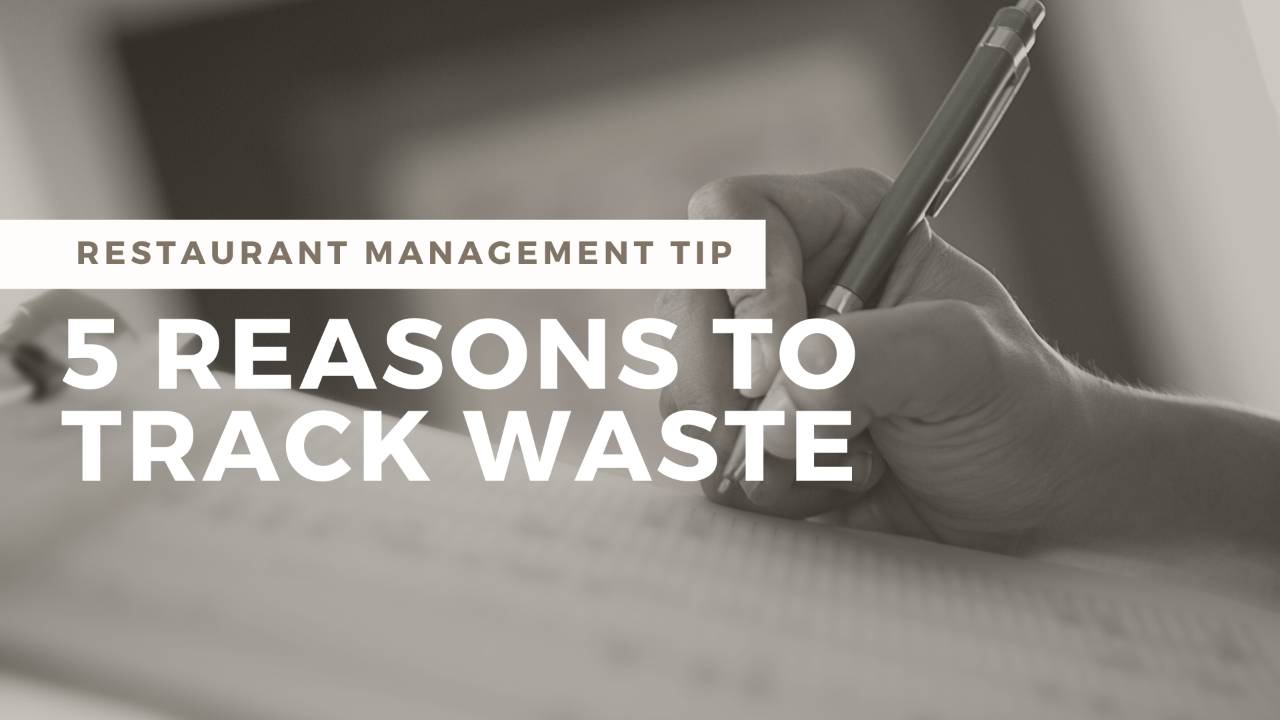Top 5 Reasons to Track Waste in Your Restaurant Kitchen

How can a clipboard system that tracks waste have an impact on your food cost and your restaurant kitchen operations? Here are my top five reasons you need to track waste in your restaurant kitchen.
A waste tracker is a simple clipboard system. Simply print off the form and put it on a clipboard in your kitchen. It has the day of the week and the date but then it has seven distinct columns to help you gather some information:
- The time the waste happened
- The item and description that was wasted
- The amount – quantity or weight – wasted
- The reason it was wasted
- The employee who wasted it
- The manager's name
- The cost of that product
The cost comes from the manager who looks it up from recipe costing cards or product costs.
When any product is wasted for any reason, the kitchen is to write it down on the waste tracker. It sounds pretty simple, and we're going to talk about how it can be a challenge, but let me first give you the top five reasons you need to be tracking waste in your restaurant kitchen.
#5 You get to identify training issues instead of getting to the end of the month and discovering a food cost high that gets attributed to someone burning steaks. At least, that’s what someone says, but if you or your key managers aren’t on the shift when this line cook is burning steaks, tracking waste will show you. This shows you the individuals needs to be retrained or repositioned or even fired.
#4 You identify bad over ordering practices. Wouldn't it be nice to instead of throwing away half a case of tomatoes every Thursday to see the pattern so you can adjust your ordering?
#3 Identify bad prep practices. What if you’re making too much product? For example, you look in the walk-in cooler and see the day dots and realize two-ounce cups with dressing were all prepped and ready but they're past date because the kitchen team is making what was written on the sheet. Tracking this waste can alert you to changes in that need to be made in prep.
#2 You can identify bad stocking practices. For instance, let's say you’re putting items on the line, such as lunch meat, and there is a bin of a certain meat that just keeps getting dried out. It doesn’t sell as well or as quickly. When you track that it’s being thrown out and wasted, you can change the stocking directions for that meat. Without a waste tracker, someone is just cleaning it all out and throwing it away each night and that high food cost is a little confusing.
#1 It allows you to proactively manage your food cost by limiting practices in your kitchen that cause waste. You identify and fix the problem that same day. You can see that tomatoes are getting thrown out and adjust the order. You can keep your eye on every position – from a server who returns dishes to the kitchen to the line cook burning steaks – and make sure they ones making mistakes are retrained or repositioned or fired.
One example is a barbecue restaurant, with eight sides on the line getting dumped every night but nobody writes it down. Since no one is tracking this waste, everyone just keeps making the same amount of food, and you use more product than the money that comes in. This is one of the reasons behind the high food cost. But if you recognize any of these issues and make a change the day you see it instead of 15 days into the next period when the financial reports come in, then you will lower your food cost and save money.
Tracking waste in your restaurant kitchen is magic because all of a sudden you can stop making the same dumb mistakes day after day after day that cost you real money. Now, a warning: This system could be the easiest system you ever put in place in your kitchen. Simply print it out and use it but know it will be the hardest system you'll ever put in place because it requires a manager to look at it each and every shift or it's not going to get used. This is the leading cause of ineffective systems and why they end up falling to the wayside. If you want to tackle these issues in your kitchen that are causing high food costs, start tracking waste today.
Be sure to visit my YouTube channel for more helpful restaurant management video tips.




